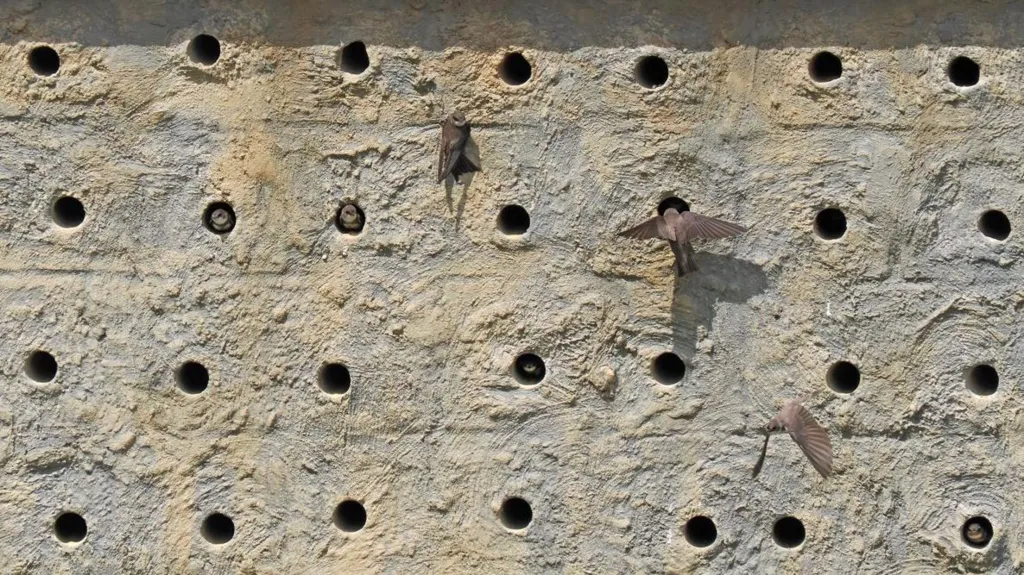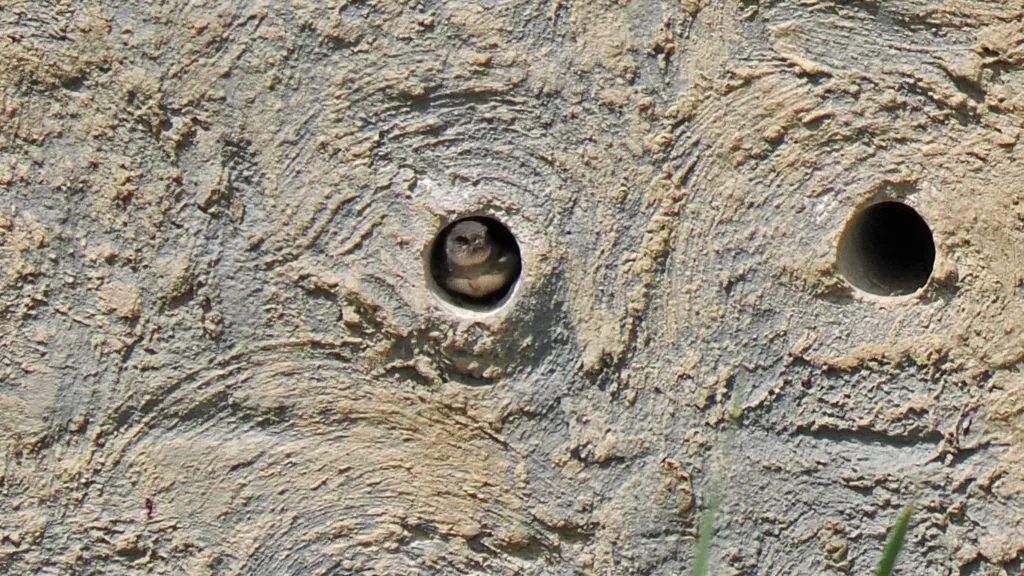Sand martin chicks have been sighted for the first time at WWT Washington Wetland Centre, just eight months after the installation of an artificial nesting bank. The arrival of these chicks in March marks a successful breeding season for the tiny members of the European hirundine family, known for breeding twice annually and typically laying four to five eggs per clutch.
Reserve manager John Gowland expressed optimism about the potential for a second brood, estimating that up to 70 chicks could emerge from the eight breeding pairs present. Sand martins, akin to swallows and house martins, frequent the Wader Lake area at the centre for hunting and feeding.
The nesting bank, a recent addition as part of habitat management efforts, has already proven beneficial in enhancing local wildlife diversity. Mr. Gowland noted early signs of nesting activity, including the transport of grass and feathers into nesting chambers, indicating the birds’ settlement and breeding readiness.
“Since the first chick sighting, we’ve been monitoring the bank closely and are delighted to observe at least eight chicks across various openings,” Mr. Gowland remarked enthusiastically. “It’s a promising sight.”

Sand martins typically lay their first eggs between late May and early June, with hatching occurring approximately two weeks later. Both parent birds diligently feed their chicks small insects until they are prepared for their maiden flights.
WWT Washington encourages visitors to participate in a survey aimed at tracking sand martin movements around the newly established artificial bank, fostering ongoing conservation efforts and monitoring of these beloved avian residents.
